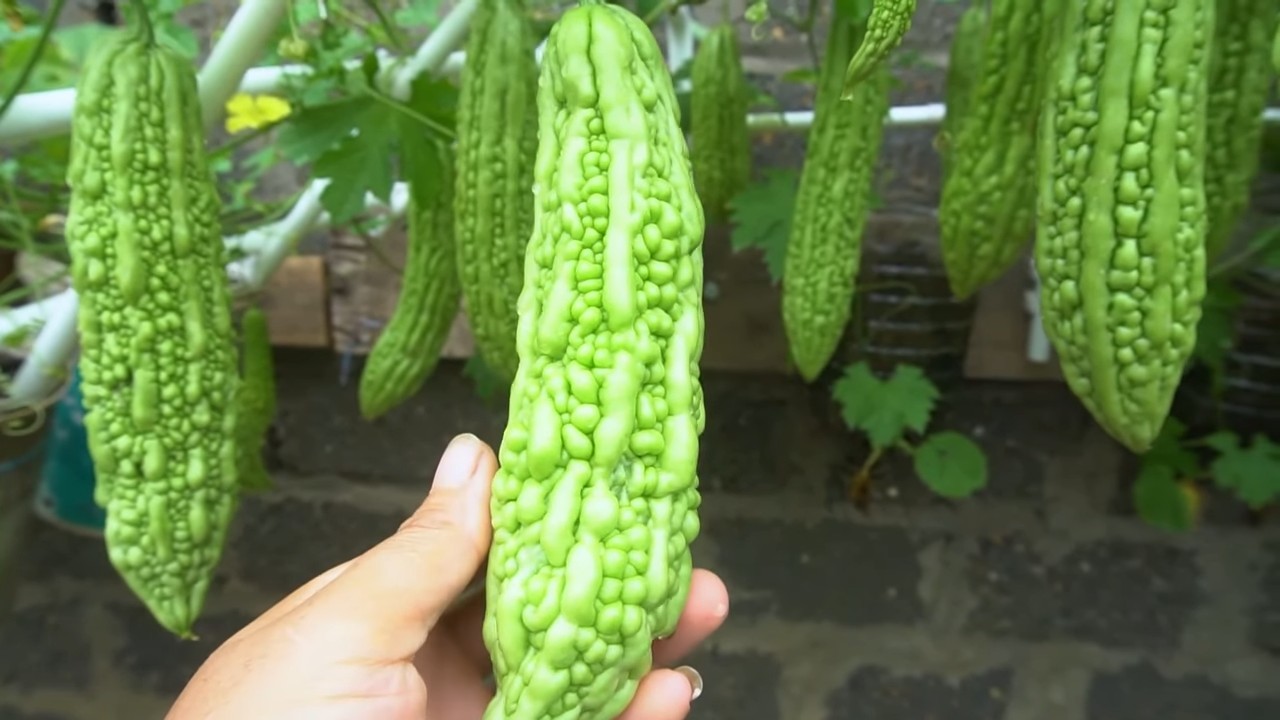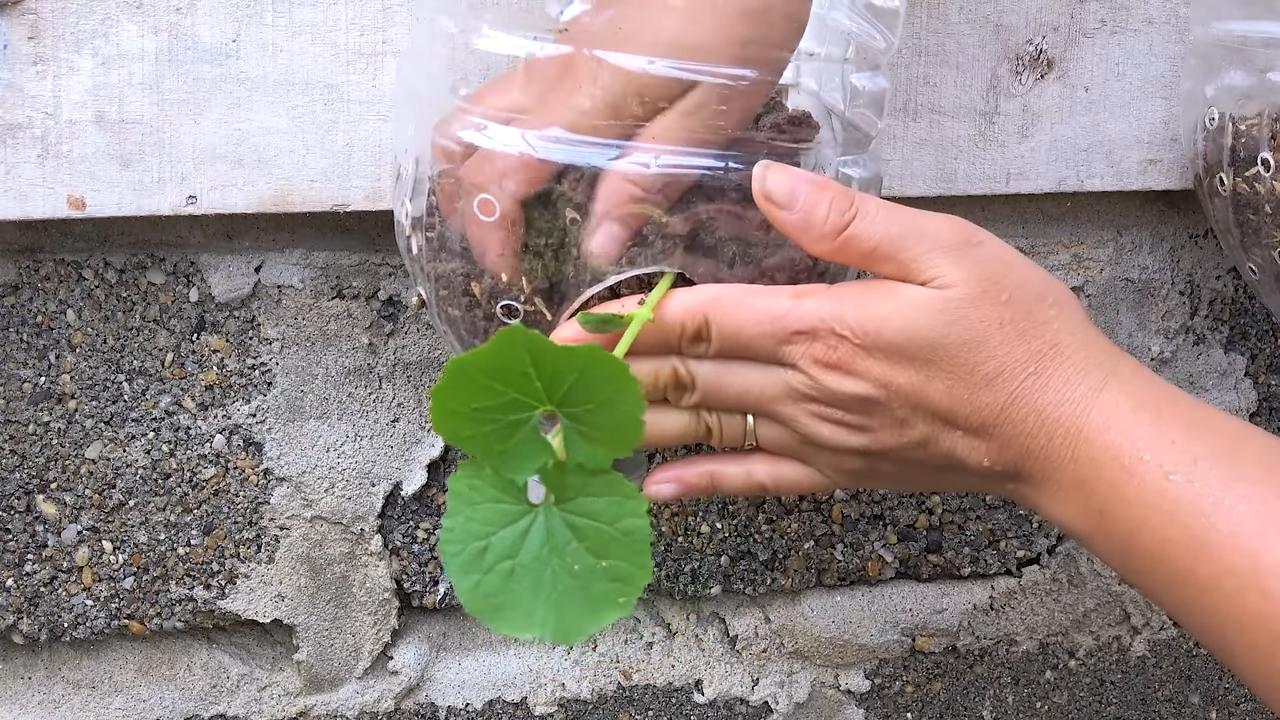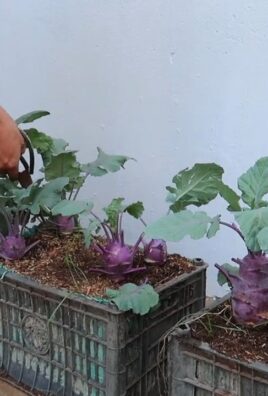Growing bitter melon in containers might seem daunting, but trust me, it’s totally achievable and incredibly rewarding! Have you ever dreamt of harvesting your own vibrant, knobbly gourds right from your balcony or patio? This DIY guide will unlock the secrets to successfully cultivating this unique and nutritious vegetable, even if you’re short on space.
Bitter melon, also known as bitter gourd or karela, has a rich history deeply rooted in Asian and African cultures. For centuries, it’s been prized not only for its distinctive bitter flavor but also for its impressive medicinal properties. From traditional remedies to culinary delights, this versatile vegetable has earned its place in homes and hearts across the globe.
But why should you bother growing bitter melon in containers? Well, for starters, it allows you to control the growing environment, protecting your precious plants from pests and diseases. Plus, it’s a fantastic way to enjoy fresh, organic produce without the need for a sprawling garden. Imagine the satisfaction of serving up a delicious bitter melon stir-fry, knowing you grew every ingredient yourself! This DIY project is perfect for urban dwellers, apartment residents, or anyone looking to add a touch of exotic flavor to their home garden. Let’s dive in and discover how easy it is to bring this fascinating vegetable to your table!

Bittermelone im Topf anbauen: Dein DIY-Leitfaden für eine reiche Ernte
Ich liebe Bittermelone! Ihr einzigartiger, bitterer Geschmack ist einfach unvergleichlich und sie ist so gesund. Aber nicht jeder hat einen großen Garten, um sie anzubauen. Deshalb zeige ich dir heute, wie du Bittermelone ganz einfach in einem Topf anbauen kannst. Es ist einfacher als du denkst und du wirst mit einer reichen Ernte belohnt!
Was du brauchst:
* Samen der Bittermelone: Wähle eine Sorte, die für den Anbau im Topf geeignet ist. Es gibt viele verschiedene Sorten, also recherchiere ein wenig, um die richtige für dich zu finden.
* Großer Topf: Mindestens 30 Liter Fassungsvermögen sind ideal. Bittermelone braucht Platz für ihre Wurzeln.
* Hochwertige Blumenerde: Eine gut durchlässige Erde ist wichtig, um Staunässe zu vermeiden. Ich empfehle eine Mischung aus Blumenerde, Kompost und Perlit.
* Rankhilfe: Bittermelone ist eine Kletterpflanze und braucht eine Rankhilfe, um sich daran festzuhalten. Du kannst einen Bambusstab, ein Spalier oder ein Rankgitter verwenden.
* Dünger: Ein ausgewogener Dünger für Gemüse ist ideal. Ich verwende gerne einen organischen Dünger.
* Gießkanne oder Schlauch: Zum regelmäßigen Gießen.
* Gartenschere: Zum Beschneiden der Pflanze.
* Handschuhe: Zum Schutz deiner Hände.
Schritt-für-Schritt-Anleitung:
1. Samen vorbereiten (Optional, aber empfohlen)
Ich finde, dass das Vorquellen der Samen die Keimung beschleunigt. So geht’s:
1. Samen einweichen: Lege die Bittermelonensamen für 24 Stunden in lauwarmes Wasser. Das hilft, die harte Samenschale aufzuweichen und die Keimung zu fördern.
2. Abtrocknen: Nach dem Einweichen die Samen abgießen und auf einem Papiertuch trocknen lassen.
2. Samen säen
1. Topf vorbereiten: Fülle den Topf mit der Blumenerde. Lasse etwa 5 cm Platz bis zum Rand.
2. Samen säen: Mache kleine Löcher in die Erde, etwa 2 cm tief. Lege in jedes Loch 2-3 Samen. Das erhöht die Wahrscheinlichkeit, dass mindestens ein Samen keimt.
3. Mit Erde bedecken: Bedecke die Samen mit Erde und drücke sie leicht an.
4. Gießen: Gieße die Erde vorsichtig an, bis sie feucht, aber nicht nass ist.
3. Keimung und Pflege
1. Standort: Stelle den Topf an einen warmen und sonnigen Ort. Bittermelone braucht mindestens 6 Stunden Sonne pro Tag.
2. Feuchtigkeit: Halte die Erde feucht, aber nicht nass. Gieße regelmäßig, besonders an heißen Tagen. Vermeide Staunässe, da dies zu Wurzelfäule führen kann.
3. Keimung beobachten: Die Samen sollten innerhalb von 7-14 Tagen keimen.
4. Vereinzeln: Sobald die Sämlinge ein paar Blätter haben, kannst du die schwächeren entfernen, so dass nur der stärkste Sämling pro Loch übrig bleibt.
4. Rankhilfe installieren
1. Rankhilfe auswählen: Wähle eine Rankhilfe, die stabil genug ist, um das Gewicht der Pflanze zu tragen.
2. Rankhilfe installieren: Stecke die Rankhilfe in den Topf, so dass sie fest im Boden verankert ist. Achte darauf, dass die Rankhilfe genügend Platz für die Pflanze bietet, um zu klettern.
3. Pflanze anleiten: Leite die Triebe der Bittermelone vorsichtig an der Rankhilfe entlang. Du kannst sie mit Gartendraht oder Pflanzenbindern befestigen.
5. Düngen
1. Erstdüngung: Beginne mit dem Düngen, sobald die Pflanze etwa 15 cm hoch ist.
2. Düngerwahl: Verwende einen ausgewogenen Dünger für Gemüse. Ich empfehle einen organischen Dünger, da er die Pflanze langsam und gleichmäßig mit Nährstoffen versorgt.
3. Düngung: Dünge die Pflanze alle 2-3 Wochen gemäß den Anweisungen auf der Verpackung.
6. Gießen
1. Regelmäßiges Gießen: Bittermelone braucht regelmäßige Bewässerung, besonders während der heißen Sommermonate.
2. Gießmenge: Gieße die Pflanze, bis die Erde feucht ist, aber nicht nass. Vermeide Staunässe.
3. Gießzeitpunkt: Gieße am besten am Morgen oder am Abend, um Verdunstung zu vermeiden.
7. Beschneiden
1. Warum beschneiden?: Das Beschneiden fördert die Verzweigung der Pflanze und erhöht die Anzahl der Früchte.
2. Wie beschneiden?: Schneide die Seitentriebe ab, sobald sie etwa 30 cm lang sind. Entferne auch alle gelben oder braunen Blätter.
3. Wann beschneiden?: Beschneide die Pflanze regelmäßig während der Wachstumsperiode.
8. Schädlinge und Krankheiten
1. Blattläuse: Blattläuse können die Blätter der Bittermelone befallen. Sprühe die Pflanze mit einer Lösung aus Wasser und Spülmittel ab, um sie zu bekämpfen.
2. Spinnmilben: Spinnmilben sind kleine Schädlinge, die sich auf der Unterseite der Blätter ansiedeln. Sprühe die Pflanze mit Wasser ab, um sie zu entfernen.
3. Echter Mehltau: Echter Mehltau ist eine Pilzkrankheit, die sich als weißer Belag auf den Blättern zeigt. Sprühe die Pflanze mit einem Fungizid ab, um die Krankheit zu bekämpfen.
9. Ernte
1. Erntezeitpunkt: Die Bittermelone ist erntereif, wenn sie ihre volle Größe erreicht hat und die Farbe von grün zu gelb wechselt.
2. Erntemethode: Schneide die Bittermelone mit einer Gartenschere vom Stiel ab.
3. Regelmäßige Ernte: Ernte die Bittermelone regelmäßig, um die Produktion neuer Früchte anzuregen.
Zusätzliche Tipps für eine reiche Ernte:
* Bestäubung: Bittermelone ist eine einhäusige Pflanze, was bedeutet, dass sie männliche und weibliche Blüten auf derselben Pflanze hat. Manchmal kann es schwierig sein, dass die Bestäubung von selbst stattfindet, besonders wenn du sie drinnen oder auf einem Balkon anbaust. In diesem Fall kannst du die Bestäubung manuell durchführen, indem du mit einem kleinen Pinsel Pollen von den männlichen Blüten auf die weiblichen Blüten überträgst. Weibliche Blüten erkennst du an dem kleinen Fruchtansatz direkt hinter der Blüte.
* Mulchen: Eine Schicht Mulch um die Pflanze herum hilft, die Feuchtigkeit im Boden zu halten und Unkraut zu unterdrücken. Ich verwende gerne Stroh oder Holzhackschnitzel.
* Windschutz: Wenn du in einer windigen Gegend wohnst, solltest du die Pflanze vor starkem Wind schützen. Ein Windschutz kann helfen, die Pflanze vor Schäden zu bewahren.
* Geduld: Bittermelone braucht Zeit, um zu wachsen und Früchte zu tragen. Sei geduldig und gib der Pflanze die richtige Pflege, dann wirst du mit einer reichen Ernte belohnt.
Häufige Probleme und Lösungen:
* Gelbe Blätter: Gelbe Blätter können ein Zeichen für Überwässerung, Nährstoffmangel oder Schädlingsbefall sein. Überprüfe die Erde und passe die Bewässerung an. Dünge die Pflanze bei Bedarf und bekämpfe Schädlinge.
* Keine Früchte: Wenn die Pflanze blüht, aber keine Früchte trägt, kann dies an mangelnder Bestäubung liegen. Führe die Bestäubung manuell durch oder locke Bestäuber in deinen Garten.
* Kleine Früchte: Kleine Früchte können ein Zeichen für Nährstoffmangel oder Wassermangel sein. Dünge die Pflanze regelmäßig

Conclusion
So, there you have it! Growing bitter melon in containers isn’t just a possibility; it’s a rewarding and surprisingly accessible endeavor. We’ve walked through the steps, from selecting the right container and soil to providing the necessary support and care. But why should you take the plunge and try this DIY trick?
Simply put, growing your own bitter melon offers a level of freshness and control you simply can’t achieve with store-bought produce. Imagine plucking a vibrant, slightly bumpy fruit straight from your patio, knowing exactly where it came from and how it was grown. Beyond the freshness factor, you also gain the satisfaction of nurturing a plant from seed to harvest, a truly fulfilling experience for any gardener, novice or seasoned.
Furthermore, growing bitter melon in containers allows you to cultivate this unique vegetable even if you lack a traditional garden space. Apartment dwellers, balcony gardeners, and those with limited yard space can all enjoy the benefits of homegrown bitter melon. It’s a fantastic way to bring a touch of the exotic to your urban environment.
But the benefits don’t stop there. By growing your own, you can experiment with different varieties of bitter melon, each offering its own unique flavor profile and texture. Consider trying the Chinese variety, known for its longer, smoother fruit, or the Indian variety, characterized by its smaller, more intensely bumpy appearance. You can even explore different growing techniques, such as training your bitter melon vine up a trellis or allowing it to cascade over the sides of your container for a visually stunning display.
And speaking of variations, don’t be afraid to get creative with your container setup. You can incorporate companion plants like basil or marigolds to deter pests and attract beneficial insects. You can also experiment with different soil amendments, such as compost or worm castings, to boost the nutrient content of your growing medium.
Ultimately, growing bitter melon in containers is a journey of discovery and experimentation. It’s a chance to connect with nature, learn new skills, and enjoy the fruits (or rather, vegetables) of your labor.
We strongly encourage you to give this DIY trick a try. The process is relatively simple, the rewards are plentiful, and the experience is truly enriching. And once you’ve harvested your first crop of homegrown bitter melon, we’d love to hear about your experience! Share your tips, tricks, and photos with us in the comments section below. Let’s build a community of container-growing bitter melon enthusiasts and learn from each other’s successes and challenges.
So, what are you waiting for? Grab a container, some seeds, and get ready to embark on a rewarding gardening adventure. Happy growing!
Frequently Asked Questions (FAQ)
What is the best size container for growing bitter melon?
A container that is at least 12 inches in diameter and 12 inches deep is generally recommended for growing bitter melon. However, a larger container, such as a 15-gallon pot or even a half-barrel, will provide more room for the roots to grow and will ultimately result in a healthier and more productive plant. The larger the container, the more moisture it will retain, reducing the frequency of watering. Ensure the container has adequate drainage holes to prevent waterlogging, which can lead to root rot.
What type of soil is best for growing bitter melon in containers?
Bitter melon thrives in well-draining, fertile soil that is rich in organic matter. A good potting mix specifically formulated for vegetables is an excellent choice. You can also create your own mix by combining equal parts of garden soil, compost, and perlite or vermiculite. The compost will provide essential nutrients, while the perlite or vermiculite will improve drainage and aeration. Avoid using heavy clay soil, as it can become waterlogged and inhibit root growth. Adding a slow-release fertilizer to the soil mix at planting time will provide a steady supply of nutrients throughout the growing season.
How often should I water my container-grown bitter melon?
Water your bitter melon regularly, especially during hot and dry weather. The soil should be kept consistently moist but not waterlogged. Check the soil moisture level by sticking your finger about an inch deep into the soil. If it feels dry, it’s time to water. Water deeply, allowing the water to drain out of the bottom of the container. Avoid overhead watering, as this can promote fungal diseases. Mulching around the base of the plant with straw or wood chips can help to retain moisture and suppress weeds. The frequency of watering will depend on factors such as the size of the container, the weather conditions, and the growth stage of the plant.
How much sunlight does bitter melon need?
Bitter melon requires at least 6-8 hours of direct sunlight per day to thrive. Choose a location for your container that receives plenty of sunlight throughout the day. If you live in a particularly hot climate, you may need to provide some afternoon shade to prevent the leaves from scorching. Insufficient sunlight can lead to stunted growth, reduced flowering, and lower fruit production. If you are growing your bitter melon indoors, you will need to supplement with artificial lighting, such as grow lights.
How do I provide support for my bitter melon vine?
Bitter melon is a vining plant and requires support to grow properly. A trellis, fence, or even a sturdy stake can be used to provide support. Train the vine to climb the support structure by gently tying it with soft twine or plant ties. As the vine grows, continue to provide support to prevent it from collapsing under its own weight. Proper support will also improve air circulation around the plant, reducing the risk of fungal diseases.
When can I harvest my bitter melon?
Bitter melon is typically ready to harvest about 2-3 months after planting. The fruit should be firm and green, with a slightly waxy coating. The size of the fruit will vary depending on the variety. Harvest the fruit before it turns yellow or orange, as this indicates that it is overripe and will become more bitter. Use a sharp knife or pruning shears to cut the fruit from the vine, leaving a short stem attached. Regular harvesting will encourage the plant to produce more fruit.
What are some common pests and diseases that affect bitter melon?
Common pests that can affect bitter melon include aphids, spider mites, and squash bugs. These pests can be controlled with insecticidal soap or neem oil. Fungal diseases, such as powdery mildew and downy mildew, can also affect bitter melon, especially in humid conditions. Preventative measures include providing good air circulation, avoiding overhead watering, and applying a fungicide if necessary. Regularly inspect your plants for signs of pests or diseases and take action promptly to prevent them from spreading.
Can I grow bitter melon from seed?
Yes, you can easily grow bitter melon from seed. You can either purchase seeds from a reputable seed supplier or save seeds from a mature fruit. To save seeds, allow the fruit to ripen completely on the vine until it turns yellow or orange. Remove the seeds from the fruit and wash them thoroughly. Allow the seeds to dry completely before storing them in a cool, dry place. Before planting, soak the seeds in water for 24 hours to improve germination rates. Sow the seeds directly into your container or start them indoors in seed trays.
Is bitter melon good for my health?
Yes, bitter melon is known for its numerous health benefits. It is rich in vitamins, minerals, and antioxidants. It has been shown to help regulate blood sugar levels, boost the immune system, and improve digestion. Bitter melon is also a good source of fiber, which can help to lower cholesterol and promote weight loss. While bitter melon has many health benefits, it is important to consult with your doctor before consuming it, especially if you have any underlying health conditions or are taking any medications.




Leave a Comment